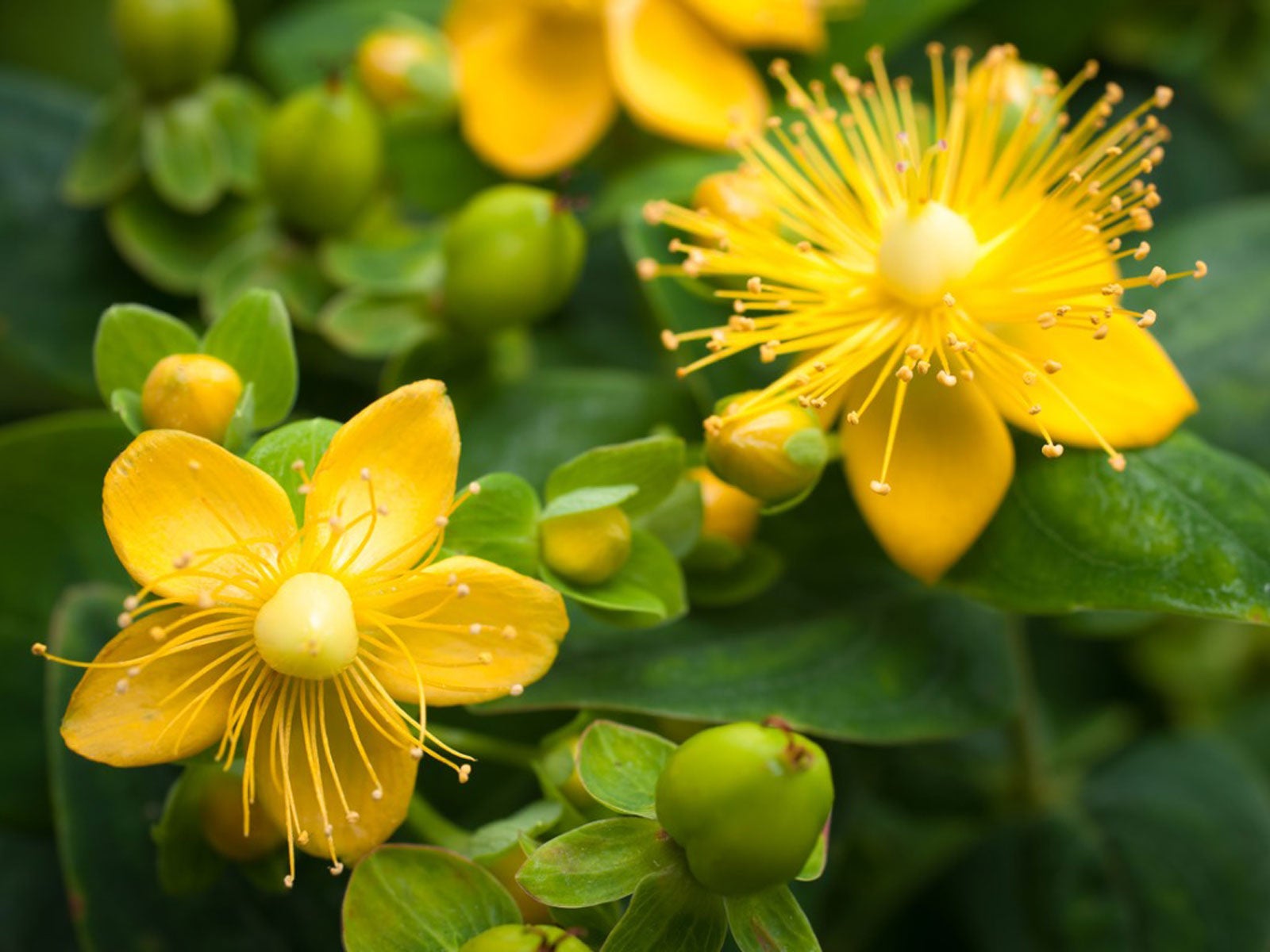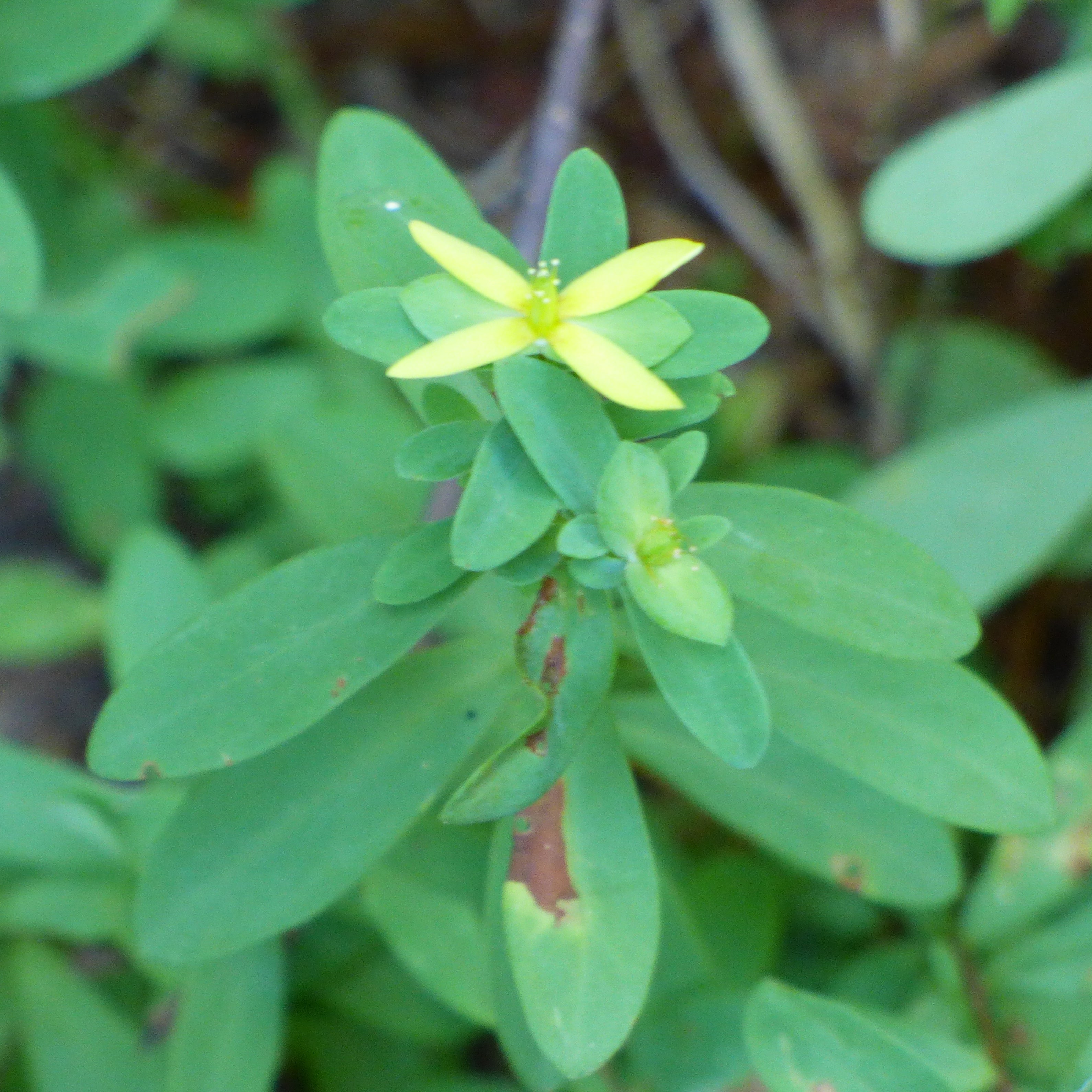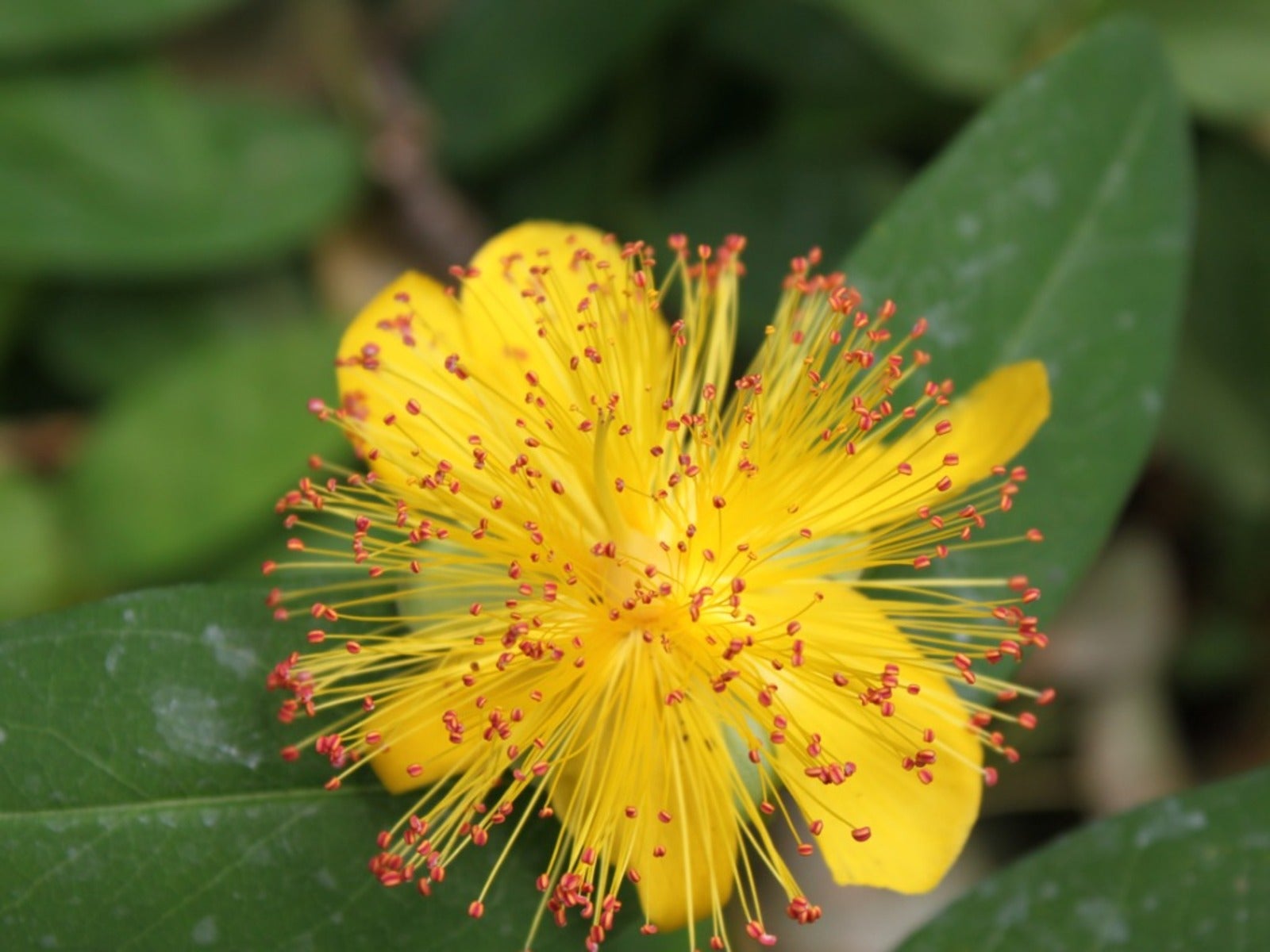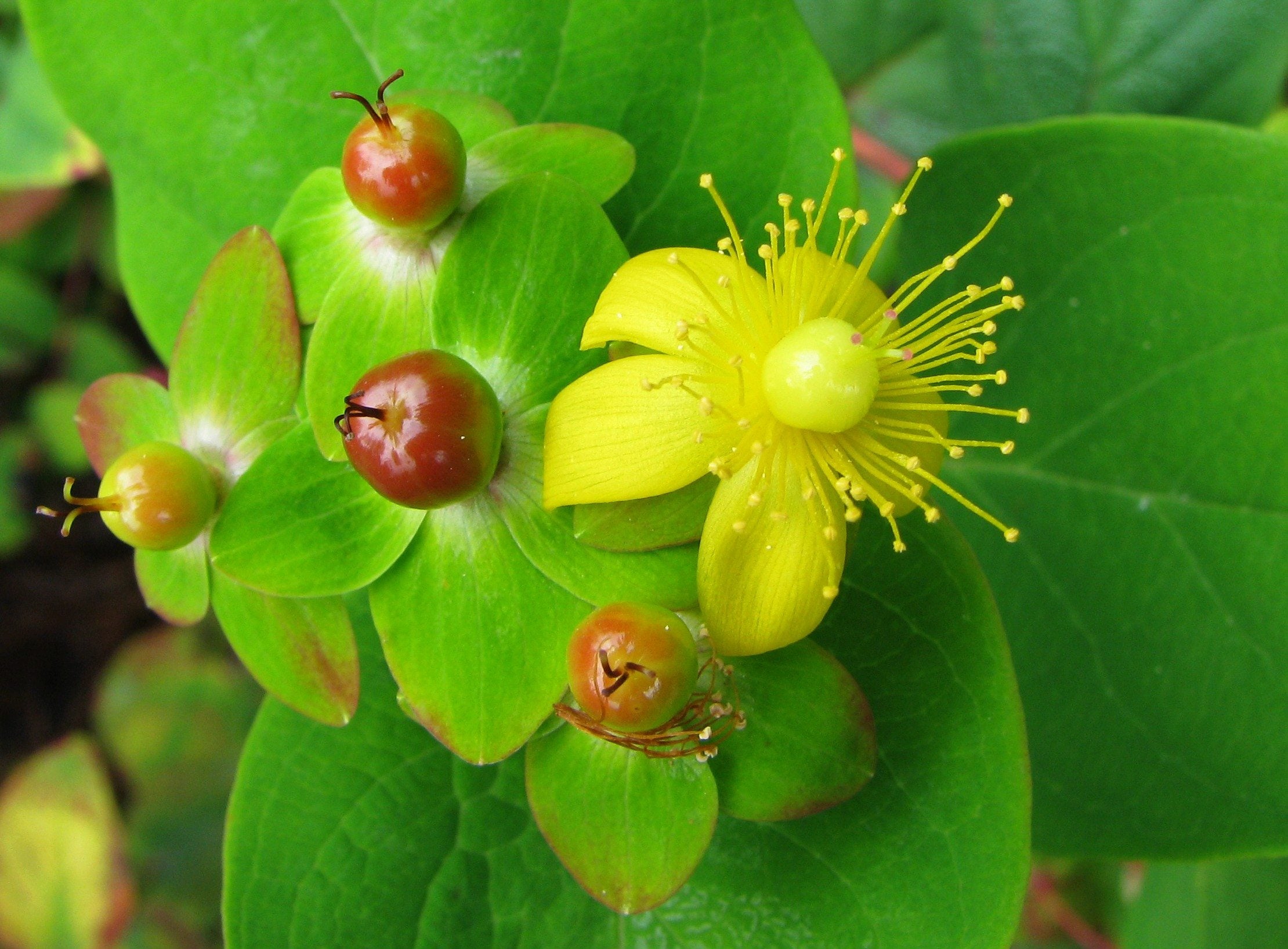St. John's Wort Plant Care: How To Grow St. John's Wort


St. John's wort (Hypericum spp.) is a pretty little shrub with cheery yellow flowers that have a burst of long, showy stamen in the center. The blossoms last from midsummer until fall, and they are followed by colorful berries. St. John's wort plant care is a snap, so let's find out how easy it is to grow these delightful shrubs.
Can I Grow St. John's Wort?
If you live in USDA plant hardiness zones 5 or 6 to 10 and have a partially shaded site, you can probably grow St. John's wort. The plant isn't particular about the soil type. It grows well in sand, clay, rocky soil or loam, and tolerates acidic to slightly alkaline pH. St. John's wort adapts to both moist and dry soil, and even tolerates occasional flooding. It also withstands drought but grows best with irrigation during prolonged dry spells. You won't find a plant that will thrive in more situations.
How to Grow St. John's Wort
Growing St. John's wort herb in a location with too much sun can lead to leaf scorch, while too much shade reduces the number of flowers. The best location is one with bright morning sunlight and a little shade in the hottest part of the afternoon. If your soil isn't particularly fertile, prepare the bed before transplanting.
Spread about 2 inches (5 cm.) of compost or rotted manure over the area and dig it in to a depth of at least 8 inches (20 cm.). Transplant the shrubs into the garden, setting them at the height at which they grew in their containers.
They grow only 1 to 3 feet (30-91 cm.) tall with a spread of 1.5 to 2 feet (46-61 cm.), so space them 24 to 36 inches (61-91 cm.) apart. Water slowly and deeply after planting and keep the soil moist until the transplants are well-established.
St John's Wort Plant Uses
St. John's wort makes an attractive ground cover and soil stabilizer. Once established, the plants need no care, and this makes them ideal for out-of-the-way locations.
You can also use it as an edging or to mark boundaries and pathways where you don't want to obstruct the view. Other uses include containers, rock gardens and foundation plantings. The species plants self-seed and can become weedy, particularly common St. John's wort (H. perforatum).
Gardening tips, videos, info and more delivered right to your inbox!
Sign up for the Gardening Know How newsletter today and receive a free copy of our e-book "How to Grow Delicious Tomatoes".
Ornamental cultivars are well-behaved plants that aren't likely to grow out of control. Here are a few cultivars you might want to try:
- H. x moserianum ‘Tricolor' - This cultivar is noted for its variegated foliage with a rainbow of color that includes red, pink, cream and green.
- H. frondosum ‘Sunburst' - This is one of the cultivars that can take winter temperatures down to zone 5. It forms a bushy mound up to 2 feet in diameter.
- The Hypearls series includes the cultivars ‘Olivia', ‘Renu', ‘Jacqueline' and ‘Jessica.' This series is one of the best for hot climates.
- H. calycinum 'Brigadoon' - The flowers on this cultivar aren't as conspicuous as some of the others, but it has chartreuse foliage that turns golden orange in bright sun.

Jackie Carroll has written over 500 articles for Gardening Know How on a wide range of topics.
-
 Looking For Plants To Give You The Soft And Fuzzies? Try These 5 Fuzzy Leaf Plant Options
Looking For Plants To Give You The Soft And Fuzzies? Try These 5 Fuzzy Leaf Plant OptionsLovers of texture, drama, silver foliage and tactile plants will adore these special sensory garden additions. These fuzzy leaf plant options will leave you all aglow
By Susan Albert
-
 Get Ready For A Summer Of Hummers! Grow These Full Sun Hummingbird Plants and Flowers
Get Ready For A Summer Of Hummers! Grow These Full Sun Hummingbird Plants and FlowersIf you’re lucky enough to enjoy a sunny backyard, make sure you are maxing out on your pollinator opportunities and grow these full sun hummingbird plants and flowers
By Tonya Barnett
-
 St. Andrew’s Cross Plant – Can You Grow St. Andrew’s Cross In Gardens
St. Andrew’s Cross Plant – Can You Grow St. Andrew’s Cross In GardensSt. Andrew?s cross plant is named for the bright yellow, cross-shaped flowers that appear from early summer until autumn. Growing St. Andrew?s cross in gardens isn?t difficult. Click the following article and learn how to grow St. Andrew?s cross wildflowers.
By Mary H. Dyer
-
 Tips On St. John’s Wort Pruning: When To Cut Back St. John’s Wort
Tips On St. John’s Wort Pruning: When To Cut Back St. John’s WortSt. John's flowers more prolifically if you prune it once a year. Click here for information about St. John's wort pruning.
By Teo Spengler
-
 Growing Tutsan Shrubs: Tips On Tutsan Care In The Garden
Growing Tutsan Shrubs: Tips On Tutsan Care In The GardenTutsan is the larger flowered variety of Hypericum, or St. John's Wort. It is a spectacular deciduous flowering shrub that makes its best showing in June to August with large attractive berries following into September. Learn more in this article.
By Bonnie L. Grant
-
 St. John's Wort Control: Learn How To Control St. John's Wort
St. John's Wort Control: Learn How To Control St. John's WortYou may know about St. John's wort for medicinal purposes but when you find it spreading throughout your landscape, your main concern will be getting rid of these plants. This article will help.
By Becca Badgett